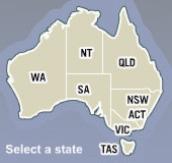Australia

Australia is often referred to as the “lucky country” with temperate climate, impressive landscape, growing economy, political stability and a quality of life envied by many. Australia is known around the world for its stunning landscapes. It is surrounded by the Indian and Pacific Oceans.
It is the sixth largest country in the world and is about the same size as the 48 mainland states of the USA and 50 per cent larger than Europe, but has the lowest population density in the world - just two people per square kilometers.
One of the oldest continents, Australia is as wide as the distance from Kuala Lumpur to Taipei and as long as the distance from Singapore to Manila. Australia is the only country that occupies an entire continent. In 2005–06, more than 131,000 people immigrated to Australia, mainly from Asia and Oceania.The migration target for 2006–07 was 144,000.Perth, Western Australia is one of the most isolated regional capital cities in the world. Australia opens its doors to about 300,000 new migrants in 2008-09—its highest level since the Immigration Department was created after World War II. Australian estimating population in the year 2008 is 21,370,800. Australia has had persistently large current account deficits for more than 50 years. Australia has grown at an average annual rate of 3.6% for over 15 years, a period in which the OECD annual average was 2.5%Since 1788, the primary basis of Australian culture has been Anglo-Celtic, although distinctive Australian features soon arose from the country's unique environment and the pre-existing indigenous culture. Over the past 50 years, Australian culture has been strongly influenced by American popular culture (particularly television and cinema), large-scale immigration from non-English-speaking countries and Australia's Asian neighbours. The vigour and originality of the arts in Australia—literature, cinema, opera, music, painting, theatre, dance, and crafts—have achieved international recognition.